On safari in India’s wild west – the last home of the Asiatic Lion
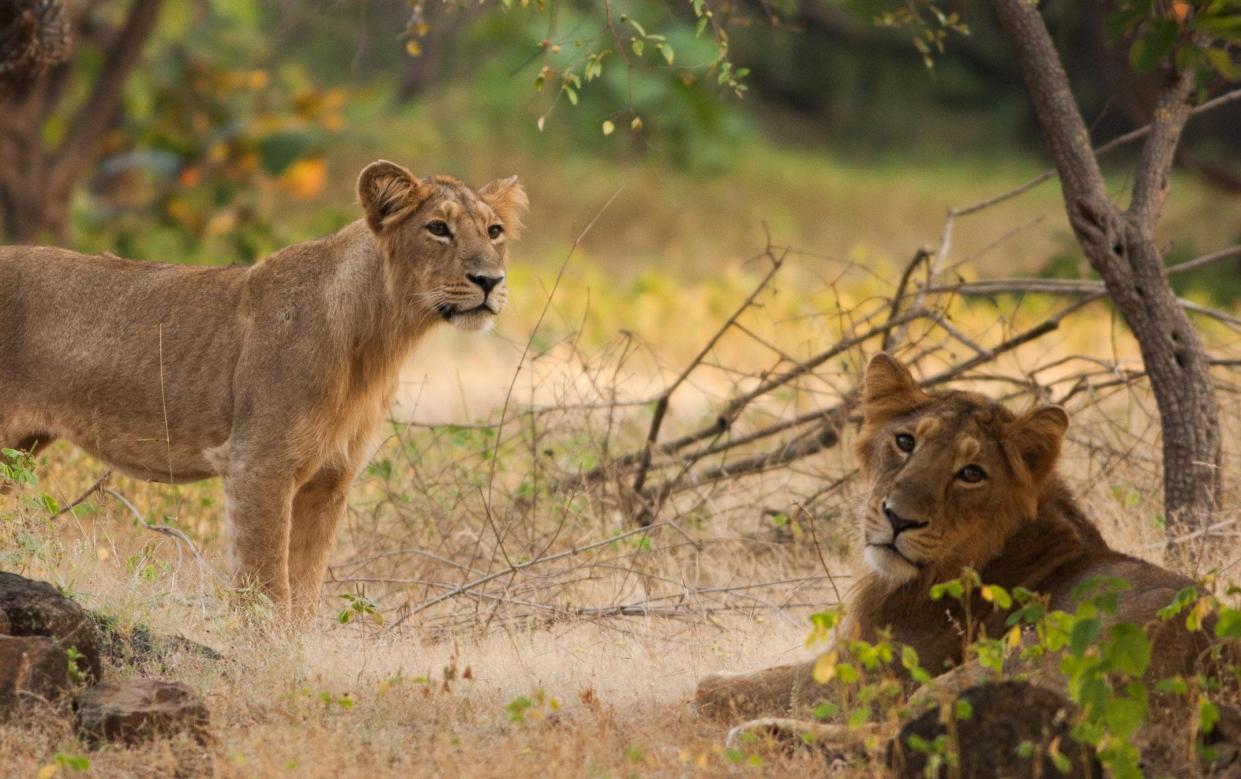
As the jeep weaved its way along the sandy forest tracks of India’s Sasan Gir National Park, the early morning sunlight splintered the canopy of the broad-leaved teak trees above us. Emerging from the forest into a grassland clearing bathed in the golden light of dawn, the shrill alarm calls from chital deer and barks of langur monkeys interrupted the chorus of bulbuls, alerting Ankit, my naturalist guide, to the chance that we may be close to spotting one of the park’s big cat apex predators.
Uniquely, it was not a sighting of a Bengal tiger that we were hoping for, but a rare Asiatic lion. The vast teak forests and grasslands of Gujarat’s wild west are the last places on earth where prides of wild lions roam in a natural habitat beyond the borders of Africa.
We heard the sound of leaves crunching slowly underfoot and the undefined shape of a beast strolled towards the edge of the forest. As it moved closer, the dappled camouflage protection of the trees faded to reveal a magnificent fully maned adult male lion walking with nonchalant muscular confidence straight towards us.
He gave us a cursory glance and a faint guttural purr as he passed the jeep, then headed down the sandy track, leading us onwards. We followed at a discreet distance and were rewarded for our patience – he led us straight to his pride. Cubs played like kittens among the sand dunes while the older females reclined in a circle around them. By the time we returned to our lodge, I had had close encounters with 20 Asiatic lions – all before breakfast.

Asiatic Lions evolved separately from their African relatives for thousands of years and Ankit diligently pointed out the subtle differences between the species. As with elephants, Asiatic lions are smaller than their African cousins. They also feature a prominent fold of skin the length of the abdomen and the males have rather less luxuriant manes that don’t quite cover the tops of their heads or ears.
Two thousand years ago, their habitat stretched all the way from the Levant and Persia to Central India, but none have been seen outside India for centuries. By 1900, they had been hunted almost to extinction, with just one single pride remaining in Sasan Gir. An effort to save the species began when the Nawab of Junagadh turned his hunting grounds in Sasan Gir into India’s first wildlife sanctuary.
The state government took this over in 1972 when it became necessary to help relocate the hamlets (or “nesses”) of the local semi-nomadic Maldhari cattle herders away from the ever-increasing number of lions. Since then the project has been a roaring conservation success, and the lions have regained most of their lost territory, with the latest census in 2020 confirming a population of 674.

I had tried to see Asiatic lions on two previous visits to Sasan Gir, but – despite their increasing numbers – had failed both times. The chaotic and unfathomable system of issuing permits for safaris had defeated me, and the accommodation options had been shabby and limited. So I was pleased to find that the park management had vastly improved. I was equally delighted by the newly opened Aramness Lodge, right on the edge of the park, which proved to not only be a breath of fresh air in this wild corner of the world, but a complete game-changer in the realms of India’s luxury safari offering.
Ankit accompanied me on all of my game drives in a comfortable open-top Bandolier safari jeep. To my delight, I discovered that there were three slots to choose from for the daily game drives: a pre-dawn morning departure, a post-breakfast 9.30am option, or the late afternoon sundowner safari. On the drives, it wasn’t just potential sightings of the hot-ticket Asiatic lions that we scoured the landscape for; Indian leopards are prolific in Sasan Gir, and more likely to be seen returning from a nocturnal hunt on the dawn drive.
There are also substantial populations of herbivores, such as chital and sambar deer, nilgai antelope and wild boar, all of which are prey for the big cats. Indian safari offers a very different experience to the conventional African equivalent. Sightings of tigers, leopards, or in this case lions, are never guaranteed on a single game drive, so they require a different mindset.
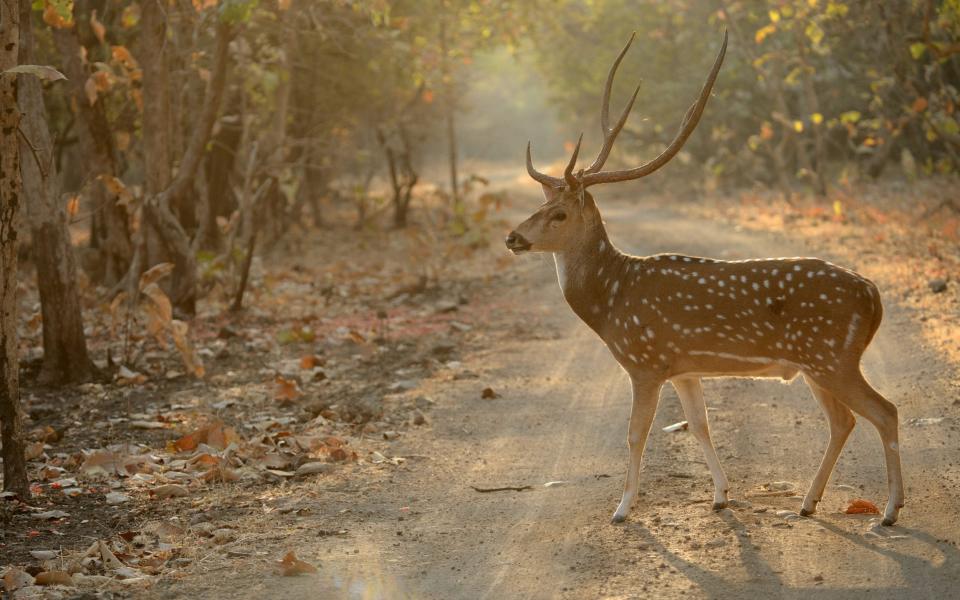
Where Africa is full of sweeping plains and protected land, in crowded India, game parks offer a very rare experience of the country’s natural wilderness, rich with indigenous flora and fauna. This alone can be a valid reason to visit, yet however hard you try not to be “big cat-centric”, there is bound to be a sense of disappointment if they remain elusive. In most parks, just a single sighting of a tiger or leopard makes for a very good day, so my multiple lion sightings in just two game drives left me feeling rather smug.
And between these drives, it was no hardship to indulge in the pleasures of Aramness, which provides an Indian safari lodge experience in a league of its own; more on par with one you may expect to find in Botswana or South Africa, rather than the sub-continent.
The lodge’s 18 two-storey suites, referred to as kothis, are spread along a winding lane and were inspired by the architecture and layout of a Maldhari ness (settlement), with each promising a clean-line contemporary, minimalist design. They have an indoor-outdoor feel, with upstairs verandas, courtyards and plunge pools (very welcome after a dusty dawn safari). Shared areas include elegant lounges, a library, spa, infinity pool and plenty of lovely hand-carved sandstone jali screens that cast a pleasing dappled light.
Yet such abundant luxury comes at a high price, so after a couple of days, I moved on to the nearby Postcard Gir lodge. At around half the price, it nevertheless proved to be a worthy alternative to Aramness. The 15 villa rooms are airy, set among the mango orchids and organic vegetable and spice gardens that provide the kitchen with zero-mile ingredients.

As I sat on my final morning, tucking into a breakfast of hot rotla rotis served with warm ghee, roasted chilis and jaggery, I felt a great sense of privilege. Few foreign tourists make it this far off the well-beaten tracks of Rajasthan and Madhya Pradesh – but they really should. Susan Gir offers a whole new way to experience majestic big cats in the wild, but beyond that, it offers a whole new way to safari, too.
Attracting large family groups of locals – who club together to share a jeep, complete with babes in arms and toddlers, for a fun day out – there is a far greater sense of inclusivity here, a sense that these beautiful creatures are for everyone. And in my book, that can only be a good thing.
Essentials
Chris Caldicott was a guest of Greaves India (020 7487 9111; greavesindia.co.uk), which has an eight-night Gujarat tour from £3,315pp. Includes domestic flights, five game drives, breakfast, private transfers, excursions and three nights at Postcard Gir Wildlife Sanctuary Lodge (full board). A supplement of £760pp is applicable to stay at Aramness Lodge.
India’s iconic wildlife experiences
For rhinos: Kaziranga National Park
Another ‘out of Africa’ yet essentially Asian wildlife experience can be had at Kaziranga in India’s north eastern state of Assam, a home of the endangered great Indian one-horned ‘unicorn’ rhinoceros. The sight of a mother and calf emerging from the vast expanse of tall elephant grass marshland on a misty morning is unforgettable.
Kaziranga is one of the last parks in India where elephant-back safaris are still on the menu, allowing visitors to move slowly and almost silently among the wildlife. Jeep and boat safari options are also available. As well as rhinos, herds of Indian elephants, wild water buffalo, swamp deer, gharial crocodiles and occasionally even Royal Bengal tigers can be seen on the dawn and dusk safaris.
Book it: Greaves India (020 7487 9111: greavesindia.co.uk) offers a seven-night itinerary from £2,299pp, staying four nights at Diphlu River Lodge. Includes game drives, most meals, private transfers, and domestic flights from Delhi.
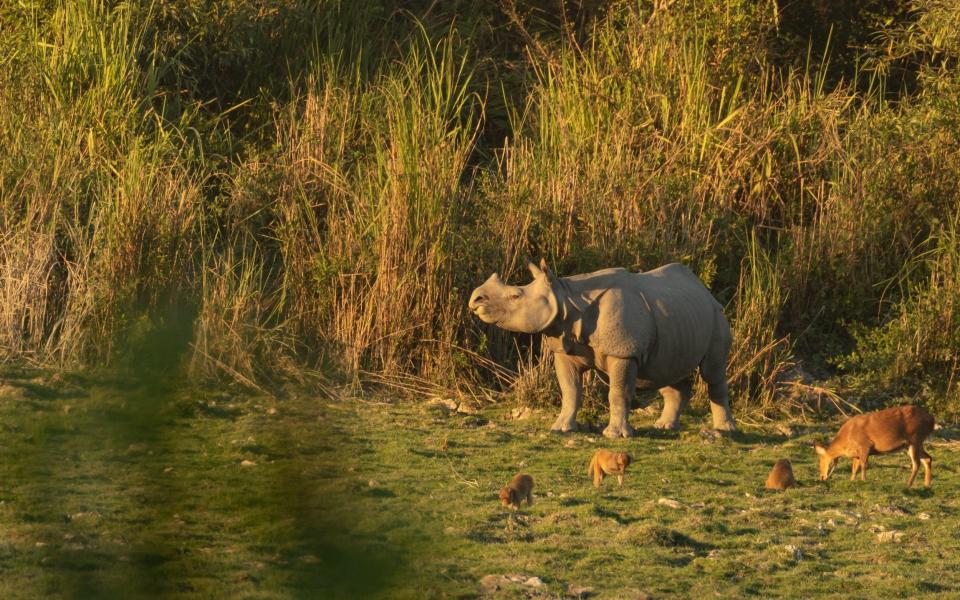
For snow leopards: Hemis National Park
This high-altitude protected area in Ladakh has the highest density of snow leopards of any in the world and is also home to the Tibetan wolf and blue sheep. The spectacular location of this wildlife park alone, high on the elevated Tibetan Plateau among the high-altitude deserts of Ladakh, surrounded by towering snow-covered Himalayan peaks is a good enough reason to venture to this remote Indian wilderness.
Hemis is also India’s largest park covering 4,400 sq km; snow leopard sightings cannot be guaranteed but other exotic fauna from golden eagles and bharal (blue sheep) to herds of shaggy mountain yaks are commonly seen. Beyond its wildlife Ladakh is one of the last places on earth with a living traditional Tibetan Buddhist culture, where crimson robed monks issue morning calls to prayer blowing long horns from the rooftops of ancient monasteries.
Book it: Greaves India (020 7487 9111: greavesindia.co.uk) offers a ten-night itinerary from £4,750pp, staying five nights at The Lung Mar Camp. Includes game drives, most meals, private transfers, and domestic flights from Delhi.
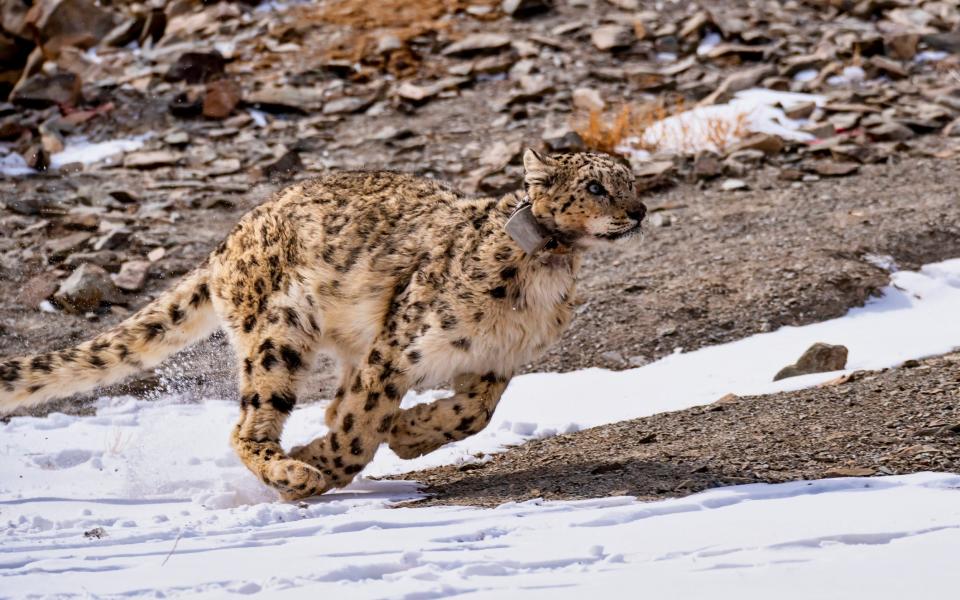
For leopards: Aravali Hills
The best place to see wild Indian leopards in a desert environment with the huge advantage of not being a national park, so there is unlimited access day and night including walking safaris, night drives and off road trails. The sublime Suján Jawai offers an African level of luxury glamping and works with very photogenic local Rabari villagers as guides.
Leopard sightings are almost guaranteed as the predators emerge at dawn and dusk to survey the granite boulder strewn surreal landscape between traditional pastoral villages for potential prey. Several species of rare birds, deer, crocodile and porcupine also populate the wilderness.
Book it: Greaves India (020 7487 9111: greavesindia.co.uk) offers a seven-night itinerary from £4,799pp, staying five nights at Suján Jawai. Includes game drives, most meals, private transfers and domestic flights from Delhi.
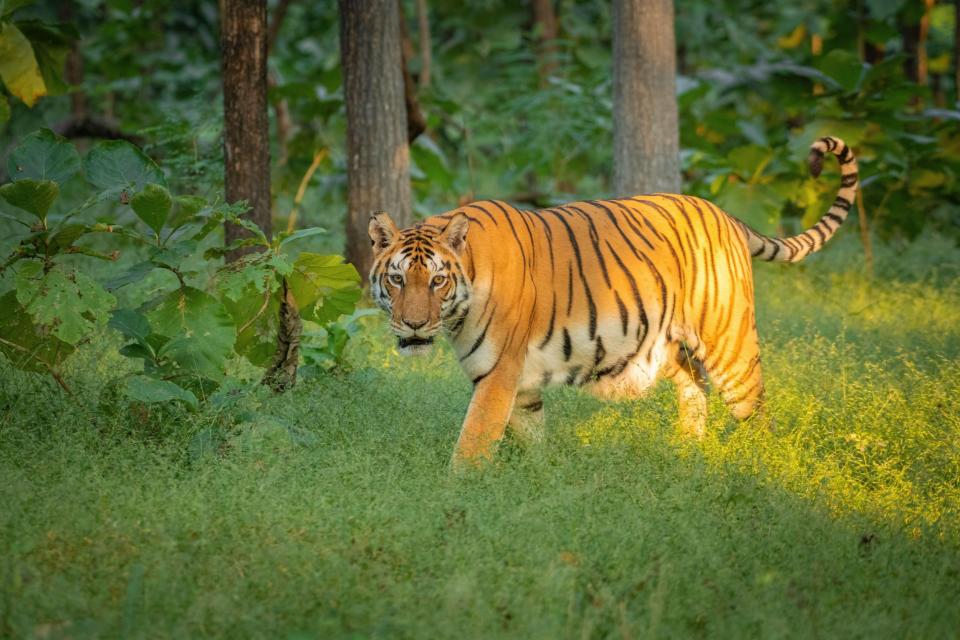
For tigers: Pench Park
Pench Park in India’s largely wilderness state of Madhya Pradesh has been a long-time participant in the Project Tiger initiative and boasts a high density of both tiger and leopard so sightings are frequent in this lush jungle location of central India. It was the setting of Rudyard Kipling’s 1894 novel The Jungle Book, and most of the wildlife featured in the story from sloth bears to wolves can be spotted on safaris.
The stylish Jamtara lodge is the first wildlife property in India to give guests the chance to spend a night sleeping in African-style Star Beds. Secure in a comfy bed beneath a mosquito net, suspended above the forest on an elevated (sloth bear proof) platform, it’s an exciting experience to slip in and out of sleep to a soundtrack of jungle sounds and light pollution free vistas of the night sky. The lodge also runs excellent outdoor cooking lessons under a beautiful big Banyan tree.
Book it: Greaves India (020 7487 9111: greavesindia.co.uk) offers a seven-night itinerary from £3,399pp, staying four nights at Jamtara Wilderness Camp. Includes game drives, most meals, private transfers, and domestic flights from Delhi.

